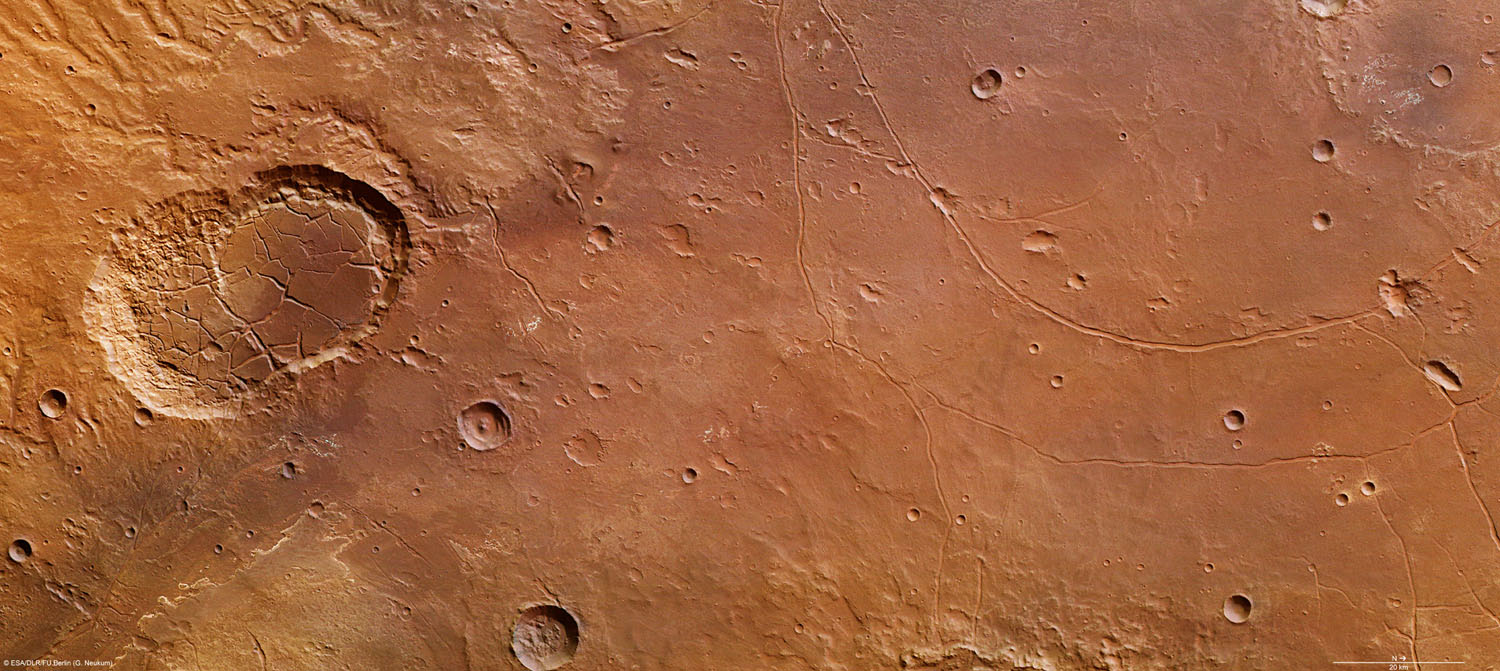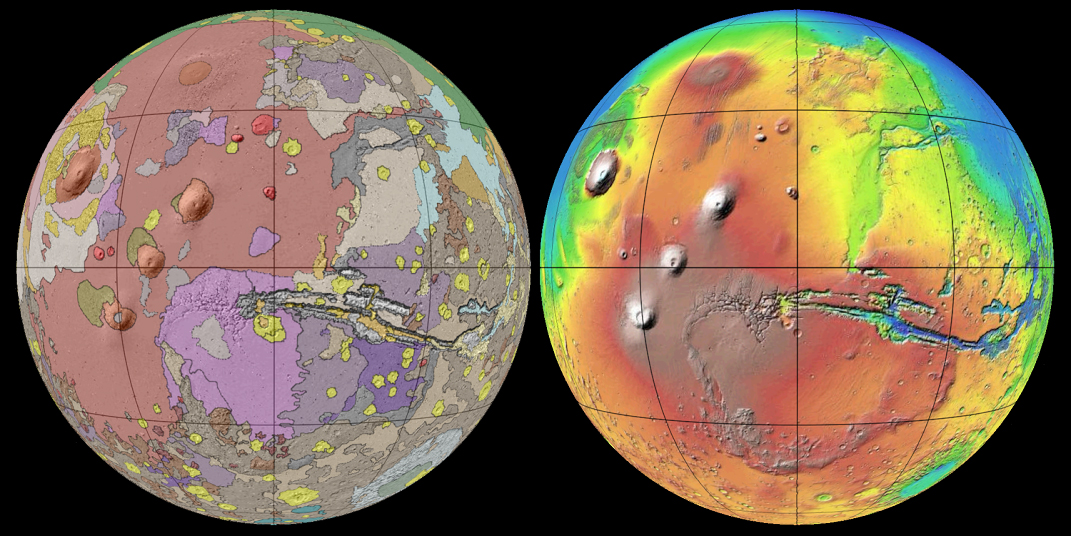Mars is a terrestrial planet that consists of minerals containing silicon and oxygen, metals, and other elements that typically make up rock. The surface of Mars is primarily composed of tholeiitic basalt, although parts are more silica-rich than typical basalt and may be similar to andesitic rocks on Earth or silica glass. Regions of low albedo show concentrations of plagioclase feldspar, with northern low albedo regions displaying higher than normal concentrations of sheet silicates and high-silicon glass. Parts of the southern highlands include detectable amounts of high-calcium pyroxenes. Localized concentrations of hematite and olivine have also been found. Much of the surface is deeply covered by finely grained iron(III) oxide dust.
Although Mars has no evidence of a current structured global magnetic field, observations show that parts of the planet’s crust have been magnetized, and that alternating polarity reversals of its dipole field have occurred in the past. This paleomagnetism of magnetically susceptible minerals has properties that are very similar to the alternating bands found on the ocean floors of Earth. One theory, published in 1999 and re-examined in October 2005 (with the help of the Mars Global Surveyor), is that these bands demonstrate plate tectonics on Mars four billion years ago, before the planetary dynamo ceased to function and the planet’s magnetic field faded away.
During the Solar System’s formation, Mars was created as the result of a stochastic process of run-away accretion out of the protoplanetary disk that orbited the Sun. Mars has many distinctive chemical features caused by its position in the Solar System. Elements with comparatively low boiling points such as chlorine, phosphorus and sulphur are much more common on Mars than Earth; these elements were probably removed from areas closer to the Sun by the young star’s energetic solar wind.

